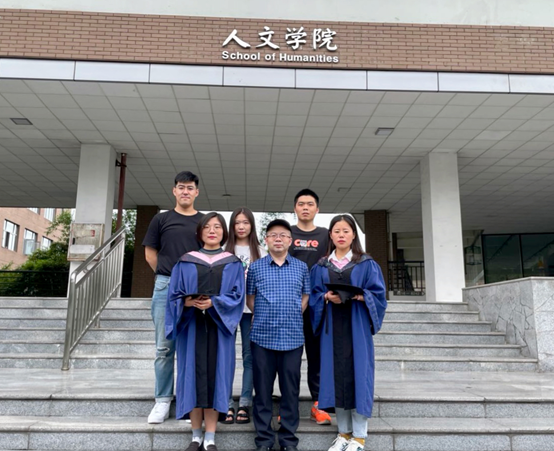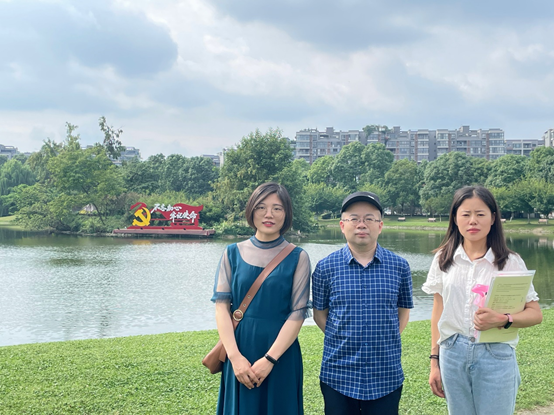

2021年5月,西南交通大學人文學院哲學所2018級碩士研究生、西南交通大學中國宗教研究中心助理研究生楊金麗、曹豔紅順利通過學位論文答辯。楊金麗的學位論文題目爲《〈元始五老赤書玉篇真文天書經〉考校解題》,曹艷紅的學位論文題目爲《葛洪〈抱朴子〉內外篇隱逸思想綜論》,兩篇學位論文均是在導師呂鵬志教授的指導下完成。
兩篇論文的中英文摘要如下——
(1)《〈元始五老赤書玉篇真文天書經〉考校解題》(A Critical Edition and Analysis of the Yuanshi Wulao Chishu Yupian Zhenwen Tianshu Jing)
摘要:《元始五老赤書玉篇真文天書經》(以下簡稱《天書經》)係南朝劉宋高道陸修靜(406-477)所編《靈寶經目》著録的一批古靈寶經之首經,約成書於東晉末劉宋初。前輩學者多擇取此經的部分內容進行探討,立足文本作文獻分析的成果較少。本文嘗試運用古典文獻學、話語語言學、宗教史學相結合的研究方法,對該經典進行校勘和解題。
本文首先綜合使用陳垣先生提出的對校、本校、他校和理校四校法校勘《天書經》全文,得出一個較為可靠的校本。在此基礎上,本文還敘録考訂了此經以下幾個方面的問題:(1)題名和目録著録、篇卷,根據教內外目録的著録考訂《天書經》經題和篇卷的演變,推論此經的經題由“太上洞玄靈寶五篇真文赤書”變為“元始五老赤書玉篇真文天書經”,卷數由一卷變為三卷。(2)版本、他書徵引和互見類似文字,《天書經》目前僅存明《道藏》本一個完本,無法做對校,只能利用他書引文進行他校,本文搜尋了道經和教外典籍中《天書經》的引文和互見類似文字,並製成表格,其中著重分析《無上秘要》的引文和幾部與《天書經》有密切關係的道經。(3)內容提要及疑難詞句考釋,概括《天書經》經文要旨並對經中的疑難詞句“太無”“冥寂玄通,大智慧源”加以考釋。
關鍵詞:道教;古靈寶經;赤書五篇真文;太無;大智慧
Abstract:The Yuanshi wulao chishu yupian zhenwen tianshu jing (元始五老赤書玉篇真文天書經 Scripture on the True Writs of the Five Ancients of the Primordial Beginning, Red Writings in Celestial Script on Jade Tablets, hereafter: Tianshu jing), composed around 400AD, is the first scripture in the ancient Lingbao corpus. While previous studies primarily focus on certain parts of the text, this thesis attempts to provide a critical edition and analysis of the scripture as a whole by comprehensively using the methods of Chinese classical philology, text linguistics and historical studies.
Firstly, I will employ the four methods of textual criticism proposed by Chen Yuan to examine the full text of the Tianshu jing. Based on the collated text, a comprehensive critical analysis is provided. Its main content includes:
1. An examination of how the scripture’s title, contents, and volumes varied over time. I argue that its title changed from the Taishang dongxuan lingbao wupian zhenwen chishu 太上洞玄靈寶五篇真文赤書to the Yuanshi wulao chishu yupian zhenwen tianshu jing 元始五老赤書玉篇真文天書經, and its number of volumes went from one to three.
2. The scripture’s different versions, quotations in other books, and parallel references. Because the only complete version of the Tianshu jing is that in the Daoist canon, this thesis focuses on quotations of the text in both Daoist and non-Daoist texts, particularly on those in the Wushang miyao(無上秘要 The Essence of the Supreme Secrets) and a couple of Daoist scriptures to which the Tianshu jing is closely related.
3. A synopsis of the scripture and explanation. This part summarizes the contents of the Tianshu jing and explains a key concept——supreme Non-being (taiwu 太無) and a complicated sentence——darkness, silence, profundity and penetration, these four are the origins of great wisdom (ming ji xuan tong, dazhihui yuan 冥寂玄通,大智慧源) in the scripture.
Key words: Daoism; ancient Lingbao scriptures; Chishu wupian zhenwen; supreme Non-being; great wisdom
(2)《葛洪〈抱朴子〉內外篇隱逸思想綜論》(A Comprehensive Study of the Theory of Seclusion in the Inner and Outer Chapters of Ge Hong’s Baopuzi)
摘要:本文基於《抱朴子》內外篇系統論述葛洪的隱逸思想。葛洪是兩晉時期著名道士,也是一位在道教史上承上啟下的重要人物,主要代表著作有《抱朴子》內外篇、《神仙傳》、《肘後備急方》等。前人對葛洪及其隱逸思想都有所討論,但還存在各種各樣的問題,如對儒道兩家隱逸思想各執一端,對隱逸思想本身闡發不夠,對隱逸思想論述大而化之等等。有鑑於此,本研究主要從以下四個方面展開系統論述:其一,早期隱逸的淵源及其思想流變;其二,葛洪隱逸思想產生的背景;其三,葛洪隱逸思想的主要內容;其四,葛洪隱逸思想的簡要評價。本文通過對葛洪隱逸思想的系統研究,證明他是一位儒道兼修的學者,同時實現得道成仙與完成經世之業是他的理想。同時,他也對中國由來已久的隱逸文化做出了理論性總結,是隱逸思想的集大成者。
關鍵詞:葛洪;《抱朴子》內外篇;隱逸思想;儒道兼修
Abstract:Based on the Inner and Outer Chapters of Baopuzi, this paper systematically discusses Ge Hong’s theory of seclusion. Ge Hong was a famous Daoist of the Jin Dynasty, and also an important person in the history of Daoism. His most representative works include the Baopuzi, the Shenxian zhuan and the Zhouhou beiji fang. Previous scholars have discussed Ge Hong and his theory of seclusion, but their analyses still contain various problems: for example, they focus only on either the Confucian or the Daoist perspective, do not explain clearly enough Ge Hong’s paradigm, or discuss his theory without the necessary accuracy. Consequently, this study mainly discusses the following four aspects: the origin of early seclusion and its ideological evolution; the background of the birth of Ge Hong’s theory of seclusion; the main content of Ge Hong’s theory of seclusion; a brief evaluation of the theory. Through the systematic study of Ge Hong’s approach to hermitism, this paper proves that he was both a Confucian and Daoist scholar, and that his ideal comprised success in personal realization and the achievement of immortality as well as in governing the world. At the same time, he became a master of the theory of seclusion by producing a theoretical summary of China’s long-standing hermitic culture.
Key words: Ge Hong; Inner and Outer Chapters of Baopuzi; theory of seclusion; practising both Confucianism and Daoism

